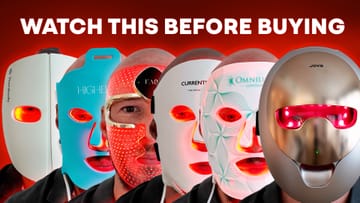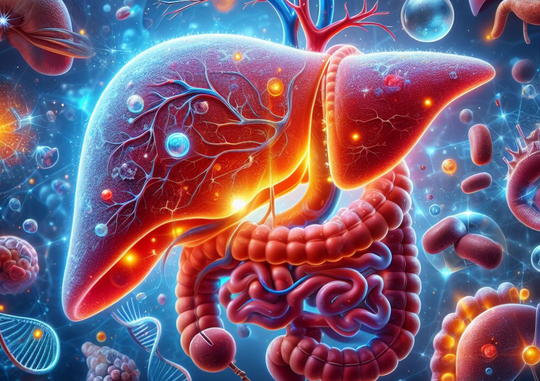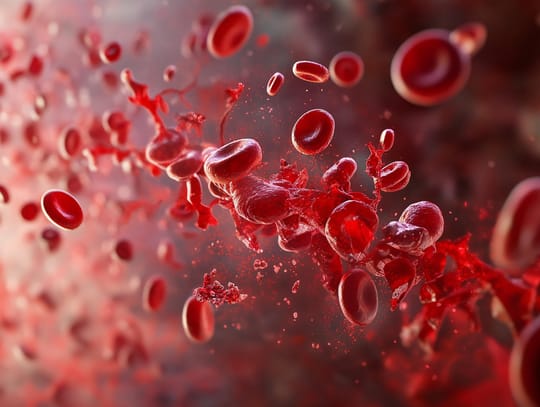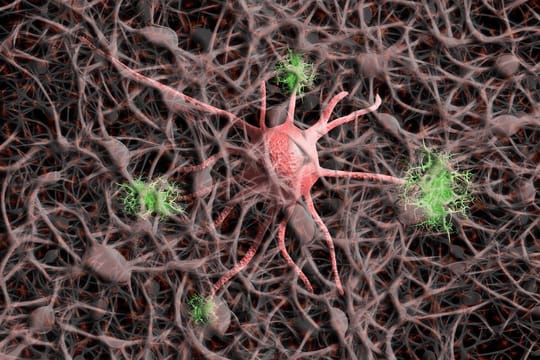This is a personal topic of mine. I'll cover the science here, as we receive numerous questions about melanoma and sun exposure. Melanoma is the most dangerous type of skin cancer out there. Some people in our Light Therapy Facebook group avoid all sunlight exposure for that reason - because of the ultraviolet light component.
Recently, a few ultraviolet light devices have entered the light therapy space as well. I'll go into these devices later in this article. Naturally, people will ask whether these devices are worth it. Because you don't want to be using a light therapy device that emits ultraviolet light, and then 10 or 20 years down the road, end up with a deadly melanoma, right?
That scenario is probably one of your worst nightmares!
So, in this article, I'll go over sunlight exposure and melanoma risk. We'll also go over questions such as is melanoma caused by the sun alone, or are other factors in play? And I'll tell you how you can reduce your melanoma risk as much as possible!
Let go...
My main message is that intermittent sun exposure is very bad for your melanoma risk - the most aggressive type of skin cancer. However, chronic sunlight exposure that's stable throughout the year has no relationship to melanoma and may be protective.
Don't get me wrong. I recommend avoiding sunburnapplied at all times. And I don't recommend sunlight overexposure - so more is not better! Just like exercise, a reasonable dose applied over time is best.
Here's my best analogy to understand this principle. Imagine running a marathon on painkillers while you never exercise. You'd probably agree with me that that situation is pretty bad. And yet, many people stay inside the sun for hours on end with sunscreen during a summer holiday, when the sun is strongest, while never seeing the sun for 11 months out of the year. That situation is equally as bad for your skin as running a marathon on painkillers is for your joints and heart!
Fortunately, the recommendations are changing around sunlight exposure. In recent years, more high-quality review studies have emerged recommending balanced and safe sunlight exposure, instead of complete avoidance. I agree there. So, yes, there's a golden mean now between total sunlight avoidance and maximum exposure.
This fact has huge implications for light therapy, as there are more and more new light therapy devices on the market right now that emit UV light. So, you can expose yourelf to ultraviolet light with light therapy in a safe manner as well. I also include tons of risk factors that you can deal with to massively lower your melanoma risk as well.
If you need an introduction to what these terms mean, check the following resources:
- What Is Red Light Therapy?
- Red Light Therapy Explained: Basic Terms Guide
- Start Here - Light Therapy 101 & Buyers Guide
- Red Light Therapy Dosing Chart: The Raw Data From Hundreds Of Studies
- Red Light Therapy Dosing: Why It's Complicated!
- Red Light Therapy Wavelengths Benefits: The Ultimate Guide
- How Often Should You Use Red Light Therapy Explained
These resources should give you a basic understanding of how red light therapy works, and the discussions around it!
The image at the start of this article is AI-generated, though!
The Rise of Melanoma: What’s Really Happening?
Yes, sunlight exposure is one of my favorite topics. I've written about melasma and hyperpigmentation and light exposure in the past, for instance, which is related to blue and ultraviolet light exposure mainly. And I've written about preventing a sunburn or healing it quicker with red light therapy.
But now, another important topic! Melanoma risk. Most people's worst nightmare. And, the main reason you're told over and over and over in the media to avoid sunlight exposure at all cost.
And, if you do get in the sun, wear lots of sunscreen, right? Well, there may be more to the story here! Sunscreen may give you a false sense of security. In the same way that painkillers allow you to run half a marathon untrained - but overexposure like that isn't a wise idea!
But, let's start with the basics first:
What Is Melanoma? And What Causes Melanoma?
There are three primary types of skin cancer: melanoma (also known as "malignant melanoma"), basal cell carcinoma, and squamous cell carcinoma (1; 2; 3; 4). Melanoma is the riskiest of these types by far. Other types of skin cancer exist as well, but I won't go into these in detail.
Melanoma is currently ranked 17th in the list of most common cancers (2). In some developed nations, it may be far less prevalent, however (8). Skin cancers are also rising globally (2). In melanoma, there's a change in your "melanocytes" that's aggressive, meaning that the cells multiply in an unhealthy manner (5). The most commonly accepted risk factor in melanoma is ultraviolet light exposure, so the part of sunlight that can give you sunburns (5).
Metastasis - or the spread of aggressively growing cells - is a high risk with melanoma (6). When cancer spreads throughout the body, it becomes much harder to control, and your risk of dying goes up big time. Fortunately, melanoma treatment has improved a lot, meaning that you're more likely to survive long term now compared to say, the 1990s (6).
While rare, melanoma can also occur in other tissues, such as the eye, GI tract, lymphatic system, and others (7). Some of these non-skin melanomas have worse outcomes. Here's how melanoma in the skin is created in the first place:
"Melanoma is a type of skin cancer involving melanocytes—the pigment cells responsible for the skin's tan color that resurface to the topmost skin layer [...]. These cells provide an evolutionary benefit by protecting skin DNA from ultraviolet (UV) radiation and exposure. The accumulation of DNA mutations, most often secondary to UV light radiation from excessive sun exposure, contributes to the melanocyte's loss of division inhibition. A thorough understanding of the histopathological features of melanoma is crucial for comprehending the biology of the tumor, thereby leading to a more precise treatment decision." (10)
Therefore, DNA mutations, resulting from damage, lead to changes in the cellular functioning of melanocytes. Melanocytes create melanin in the skin that's responsible for your tan. These malignant cells then begin to grow and spread aggressively.
That growth in cells also lies at the basis of understanding of how to diagnose melanoma in the skin, however:
Melanoma Diagnosis And Treatment
Here's how researchers describe the process of diagnosing melanoma and treatment:
"Patients typically present with an asymmetrical large lesion that may also itch, bleed, ulcerate, or develop satellite lesions. Patients who present with metastatic disease or with primary sites other than the skin have signs and symptoms related to the affected organ systems. Once a suspicious skin lesion is identified, a biopsy must be performed to confirm the diagnosis of melanoma. An excisional biopsy is the preferred biopsy modality. Melanoma treatment typically involves wide local excision, Mohs micrographic surgery, digital amputations, or adjuvant therapy depending on tumor location, depth, ulceration, lymph node involvement, and metastasis." (9).
What's very counterintuitive to me is that multiple recent studies show that there's not sufficient evidence for routine screening of the skin for cancers (11; 12; 13; 14; 15). Yes, of course, if you've symptoms or notice clear abnormalities developing in your skin, see a doctor or dermatologist as soon as possible.
Here's a picture of how to identify melanomas, which are displayed on the left, and common skin moles on the right:

Key here are the ABCDE rules (16):
- Assymetry - if there's assymetry in the shape, the risk of skin cancer becomes higher. With symmetrical shapes, there's more chance that it's a common node.
- Border - An uneven border signifies higher skin cancer risk and an even border a higher chance that it's a node.
- Color - If the spot is made up of different colors, there's a higher skin cancer risk, and a single color implies a lower chance.
- Diameter - A diameter greater than 6 mm, or 0.25 inch, infers greater skin cancer risk.
- Evolution - If the spot evolves or changes over time, the risk of skin cancer is also higher. Keep in mind that skin cancer is excess tissue growth!
ABCD are displayed in the picture above!
More screening isn't always better, however, and neither is less screening in some cases. Here's what researchers write about the topic:
"Indeed, there remains significant controversy over whether screening for melanoma via increasing the frequency of routine skin checks leads to tangible long-term health benefits for patients. In this paper, we highlight how skin cancer screening can impose harms such as overdiagnosis and suggest that the principle of non-maleficence should play a greater role in the formulation of screening policies. We also explore the pressing issue of the underdiagnosis of melanoma in particular populations." (14)
For instance, by making people hyperaware of any changes on their skin, you may get unwanted anxiety and hypervigilance. In turn, that anxiety and hypervigilance may lower your quality of life.
Asymptomatic screening has less evidence backing it (15). If you're at a higher-risk group, however, you may want to consider screening (15). Lots of childhood sunburns, fair skin type, familiar history of melanoma, and immune problems are examples there (15). AI screening that's much more precise is also emerging quickly (15).
Melanoma treatment has undergone significant improvements in the last few decades, fortunately (16; 17; 18; 19; 20). Treatment depends on the stage. An early detected melanoma that hasn't spread throughout the body has an entirely different treatment pattern than if the cancer has spread throughout the body.
Early treatment, for instance, often includes surgical removal of the early-detected melanoma. And there's a biopsy of the lymph nodes to detect whether the cancer has spread. Later-stage melanoma treatment often includes drugs, radiation, and other strategies. So there's no one-size-fits-all treatment for melanoma. New strategies such as immunotherapy have changed the game for countering melanoma mortality in the last few decades.
So, yeah, hopefully, you've understood the basics so far. Let's consider risk factors now:
How Do You Get Skin Cancer? And How Do You Get Melanoma? Risk Factors
Let's talk about melanoma risk factors. And what you can do to prevent it! I'll explore this topic in much more detail later on when I talk about sunlight exposure. But, besides sunlight, there are a few factors that you'll want to know about as well:
Factors that increase the risk of melanoma:
- Smoking is protective against melanoma - apparently - with a 40% reduction in men and 44% in women (21).
- Having many moles at age 21 increases risk a whopping 3.46 - 6.36X (22). Having more moles also generally raises your risk (23).
- Genetic disposition can raise the risk by 2-3X (22).
- Sunburns, especially in childhood, raise your risk by 2X (24).
- Sunbed use raises your risk by 20 - 50% (24).
- High lifetime intake of high-alcohol (30%+) drinks (spirits) raise risk by 47% (24).
- Immune-related diseases raise risk by about 2.5 - 10X (24).
- Fair skin type and light eyes raises your risk (24). This relationship is complex though, but generally, the lighter the eyes (blue like me) and the fairer the skin, the higher the risk.
- A light hair color, with red at the highest risk, then blond, increases risk (24). Red hairs have 3.64X the melanoma risk of dark haired people, for instance.
- Having more than 100 moles raises risk 6.89X (24). Having atypical moles does the same!
- Men have about 1.6 - 1.7X the melanoma risk women do (24).
- A personal history of melanoma raises risk by 8X+ (24). The numbers for other cancers are even greater though!
Yes, I hope that makes things a bit clearer! You don't control most of these risk factors. We are going to now consider a very important risk factor, arguably the most important of all, below:
The Hidden Mechanisms Of Ultraviolet Light: Chronic Versus Intermittent Sunlight Exposure
So here's a quote from a study two decades ago (2005) that started a ball rolling on sunlight exposure and melanoma:
"Intermittent sun exposure and sunburn history were shown to play considerable roles as risk factors for melanoma, whereas a high occupational sun exposure seemed to be inversely associated to melanoma." (25).
And, the study I just quoted on all the other risk factors also mentions the following about melanoma risk and the types of sunlight exposure - don't worry I'll summarize the outcomes of this study below:
"Specifically, intermittent exposure during activities like sunbathing, water sports, and vacations in sunny places plays a causative role in the development of melanoma, with a documented 60% elevated risk (relative risk (RR): 1.61, 95% confidence interval (CI): 1.31–1.99). Chronic cumulative sun exposure (e.g. occupational exposure) is not associated with melanoma risk in a metanalysis (RR: 0.95, 95% CI: 0.87–1.04). This observation could be explained by epithelial thickening through enhanced keratinocyte proliferation in response to (chronic) sun exposure, which has been shown to be UV-protective, independent of pigmentation. Intermittent intense sun exposure, on the other hand, stimulates melanocytes: a single erythemal UVB exposure causes a delayed, dose-dependent increase of melanocyte proliferation, whereas the same amount of fractionated suberythemal UVB radiation has no discernible effects. Consequently, nevi and melanoma might be most effectively induced by intermittent UVB overexposure " (24)
The bottom line here is that chronic sunlight exposure lowers your melanoma risk by 5%. And instead, intermittent sunlight exposure increases your risk by 60%.
Another difference is that the skin responds differently to chronic sun exposure than intermittent (when you go into the sun sometimes). Chronic sunlight exposure has additional protective mechanisms in the skin that intermittent exposure doesn't have. Parts of the skin seem to get thicker, and DNA-repair mechanisms get upgraded.
And, this link isn't just a random cherry-picked study. Many studies showcase that link. Just to make sure that there's no doubt about my claim, let's consider a few recent quotes from studies on this topic:
"Cutaneous melanoma (CM) has consistently been associated with intermittent sun exposure, while the association with chronic sun exposure is debated." (26).
And the full text of the study states that:
"Chronic sun exposure has an unclear relationship to the development of CM due to conflicting results of studies which could imply effect modification by sun sensitivity. One of the major issues when studying chronic sun exposure is that it can include a lot of different specific forms of sun exposure that are not comparable. Additionally, some forms of sun exposure can be chronic or intermittent depending on individual exposures and geographic locations (such as outdoor recreational or leisure activities that are seasonal in some places but year around in other places). Studies of high-occupation sun exposure typically show a reduced risk of melanoma, which may reflect self-selection for working outdoors by those who are not sun sensitive." (27)
Yes, in some studies, outdoor workers (who receive a significantly higher dose than office workers and similar individuals) have a reduced melanoma risk.
A review that looked at 14 earlier studies comparing outdoor workers to indoor workers found no increased risk for outdoor workers (28). Again, these outdoor workers probably get 10X the ultraviolet light dose per day, compared to an office worker who only spends maybe 30 minutes outdoors during a break, if they are lucky.
Also, please don't confuse my mentioning of the chronic sunlight exposure risk with advocating for sunburns (29). A history of sunburns literally doubles your melanoma risk (29). The more sunburns you have, the higher your melanoma risk becomes (30). Here's the increase in odds in a recent review study (30):

So, sunburns during adolescence are leasst bad but show maybe a 30% increase. In childhood, risk almost doubles. And, as adults there's almost a 3X increase. There is some discrepancy between review studies, however, as the review I quoted earlier assumes that childhood sunburns are worst.
What's surprising is that individuals with darker skin have slightly more elevated risk from chronic sunlight exposure than fairer-skinned people (31). Overall, though, when all the data is taken together, there's no link between both.
So let's return to my earlier analogy of comparing exercise and sunlight exposure. If you never exercise, running half a marathon on painkillers isn't smart. And if you never go into the sun, using sunscreen and then staying in for hours at a time is arguably not very smart either. With sunlight, parts of the light spectrum still penetrate your skin, even if you are wearing sunscreen.
Melanoma even has a strong latitude risk factor, whereby individuals living in countries that are strongly associated with intermittent sunlight exposure have much greater risk of melanoma:

Dark red, in that picture, has about a 10X increase in melanoma risk than bright yellow. Keep in mind that the equator runs roughly through the top of South America, and mid-Africa, and then straight through Indonesia.
Once again, if you're getting the most chronic sunlight exposure possible, near the equator, where the sun is strongest in terms of ultraviolet radiation, and where you can go outside year-round because it's warmer, melanoma risk is the lowest.
Surprise, surprise!
So Is There A Dose-Response Link Between Ultraviolet Light Exposure And Melanoma, Or Not!?
Now, you may ask based on the data above:
"But Bart. You say that chronic sun exposure doesn't increase melanoma risk, which was stated explicitly in your text. Why, then, can you state that there is a dose-response link between UV exposure and melanoma in general? Should that dose-response relationship not be there in some cases?"
Yes, that's exactly the case, in my opinion. The causal relationship is conditional. So the causal relationship is only present for intermittent sunlight exposure.
This pattern of exposure is likely similar to that of hunter-gatherer societies. Historically, your ancestors didn't stay indoors for 350 days a year. And then, when the sun was its strongest go to a spot closer to the equator and spend 2 weeks in the sun.
No, hunter-gatherers naturally have similar light exposure throughout the year. Sure, at higher latitudes (further away from the equator) there are more substantial seasonal changes in sunlight. But even then, your ancestors were never in a situation where they could stay indoors for months at a time because they'd starve.
Only with the Industrial Revolution did that pattern change. Less than 200 years ago - in 1850 - 64% of the US population were still farmers and thus working outdoors most of the time (32). In 1900, that was still 40% (33). Keep in mind that there are many other outdoor jobs as well, so these numbers very much underappreciate the true numbers!
How To Optimize Sunlight Exposure
How then, should you optimize your sunlight exposure sessions? Ideally, here, you'd follow the hunter-gatherer patterns. So, you'd have some sunlight exposure year-round, ideally every single day.
Not all days will be the same. I'm also swamped often, but I'm still trying to get some sunlight in whenever I can. I feel horrible without any sunlight, to be honest - the same for no exercise for weeks!
What you'd want to avoid is getting into the intense sun if you haven't built up any tolerance to it. If you live in Canada, the US, or Northern Europe and don't receive any sunlight exposure during the fall and winter, you'll need to gradually increase your exposure.
Ideally, you will get exposure through fall and winter but I know that many people are unwilling to do that. And, of course, don't wear sunscreen and don't stay in too long!
I did, for many years in the Netherlands - my old superviser of the security company where I worked used to drive by the road and saw me getting sunlight in snowy November!
It's pretty common sense. Use the exercise analogy that I used earlier. If you haven't exercised for 6 months, it's not smart to do a very intense two-hour workout. No, you'll start with 15 minutes and go way below your tolerance. And build up slowly from there, ideally, week by week.
Now, I do think that some of the ultraviolet light therapy devices that have emerged lately can help with this process. I'll explain that shortly below:
Best Devices For Ultraviolet Light Exposure
Lately, since 2024, quite a few light therapy devices have emerged on the market that emit ultraviolet light. The founder and owner of this website, Alex Fergus, has considered a few of them.
Here's an interview with one of the founders of Enyrgy:
Recently, Chroma have also come out with a D-Light version of the "Ironforge" - that helps create vitamin D in the skin, and a Lux Vital that emits UVA:
You can use these devices if there's very little sunlight at your location in the wintertime. Or, if you're working a job wherein sunlight exposure isn't possible because you need to be indoors all the time.
Sunlight Exposure Versus Red Light Therapy
You may also want to know how sunlight exposure and red light therapy compare. For that case, watch the following videos:
And, check the following video:
It will help you understand the light spectrum of the sun better. Sunlight has a combination of different types of ultraviolet (ultraviolet A and B), visible colors (violet, blue, green, yellow, amber, and red), and infrared (near, middle, and far infrared).
Sun Exposure: Worth the Risk? Why The Benefits Outweigh The Risks
I'll briefly go into this topic here. In the near future, I'll write another article on the benefits of sunlight exposure that provides more detailed information.
Many people often think they can simply take a vitamin D pill and reap all the benefits of sunlight. That's very far from the case. Many different mechanisms from sunlight exposure rely on non-vitamin D mechanisms. Vitamin D is only responsible for a small proportion of sunlight's benefits.
Let's consider a few benefits of sunlight based on recent reviews on the topic (34; 35; 36; 37; 38; 39; 40; 41). These are the effects of ultraviolet light specifically, not other types of light:
- Vitamin D stimulation. Vitamin D levels also independently lower your risk of melanoma and its severity, although some studies disagree (42; 43; 44).
- The creation of serotonin and dopamine in the eye. Serotonin makes you feel that "all is OK" and dopamine is strongly tied to motivation and abstract thought. The serotonin created here will also be converted into melatonin at night, leading to deeper sleep. The melatonin created here also once again lowers the risk of melanoma, as poor sleep is related to low melanoma.
- Opsin stimulation in the skin and other tissues - Some opsins such as OPN3, OPN4, and OPN5 are non-visual photoreceptors in the skin (and other tissues), that respond to light, mainly ultraviolet A (UVA), blue, and green light.
- The natural creation of endorphins, which are natural opioids (painkillers). Opioids are responsible for the "runner's high" you get after heavy exercise, but you get the same feeling by being in the sun.
- A better functioning Nitric Oxide (NO) system, which helps open up your blood vessels. That ability goes down with age, but sunlight exposure (at the right dose) can keep you younger.
- Immune modulation leading to lower disease risk and less skin pathologies. I've extensively written about skin conditions such as psoriasis, eczema, rosacea, and others - very often these are helped by sensible ultraviolet light expsure but not by taking a vitamin D pill.
- Very strong circadian rhythm effects due to the brightness of the sun. You can't get the strength of the brightness, especially in the blue and ultraviolet light categories, with most red light therapy panels yet. The higher the amplitude (the difference between light and darkness), the better your sleep quality at night generally becomes.
- Building the melanin system in the skin and nervous system. This dynamic goes very deep. Some health influences such as Dr. Jack Kruse have extensively talked about the importance of the melanin system not only in human evolution but also how it's foud in the brain and nervous system, as well as other locations in the human body. Without ultraviolet light exposure, you won't build that melanin. Yes, you can take supplements to build melanin but I'm worried about second-order and third-order effects, in other words, unintended consequences from oversimplification.
- Lower all-cause mortality - Just like exercise, using infrared saunas, and more, sunlight exposure lowers your overall risk of dying of any disease (or other cause!) (45; 46; 47).
Let's put that perspective in a broader viewpoint as well. A recent study has been titled "Insufficient Sun Exposure Has Become a Real Public Health Problem", with which I fully agree (34). The sun has been unfairly demonized in my opinion. Here's what that study states:
"Studies in the past decade indicate that insufficient sun exposure may be responsible for 340,000 deaths in the United States and 480,000 deaths in Europe per year, and an increased incidence of breast cancer, colorectal cancer, hypertension, cardiovascular disease, metabolic syndrome, multiple sclerosis, Alzheimer's disease, autism, asthma, type 1 diabetes and myopia. Vitamin D has long been considered the principal mediator of beneficial effects of sun exposure. However, oral vitamin D supplementation has not been convincingly shown to prevent the above conditions; thus, serum 25(OH)D as an indicator of vitamin D status may be a proxy for and not a mediator of beneficial effects of sun exposure. New candidate mechanisms include the release of nitric oxide from the skin and direct effects of ultraviolet radiation (UVR) on peripheral blood cells." (34).
So, you need ultraviolet light exposure in your life, at the proper dose, for optimal health. Vitamin D pills will maybe only give you 10-20% of the benefits, if I had to put a number on it.
Another review states a similar conclusion:
" Numerous studies have shown that sunlight exposure can provide protection to a wide variety of diseases, ranging from different types of tumors to hypertension to type 1 diabetes to multiple sclerosis. Moreover, studies have shown that avoiding sunlight may influence the initiation and progression of some of these diseases. Avoidance of sunlight, coupled with the inclination towards consuming supplements, is becoming the primary choice to obtain vitamin D. The purpose of this article is to present evidences from published literature, to show that the expected benefits of vitamin D supplements are minimized by the potential risk of cardiovascular events and beyond. Since hypovitaminosis D status usually reflects reduced sunlight exposure, the obvious primary replacement should be safe sunlight exposure, and not exogenous supplements." (35).
Other more recent reviews join this sentiment and no longer recommend sunlight avoidance (36; 37; 38; 39). Of course, you don't want to rely on just "trust me" advice here for lowering melanoma risk. So here are quite a few additional strategies for lowering your melanoma risk:
Strategies To Lower Melanoma Risk
One of the most damaging viewpoints in terms of cancer is that it "just happens to you". This is the case for almost any type of cancer. Often, there are tons of different lifestyle and nutrition strategies you can implement to lower your overall risk.
Let's start with nutrients that can protect you against sunlight damage, or sunburn:
- Collagen protein, which has become super popular because of increasing collagen in the skin for reducing wrinkles, also protects against skin damage because of ultraviolet B exposure (48).
- Vitamin A (retinol) and its plant-based precursors (carotenoids) are highly protective to the skin (49; 50; 51). Supplementing with lycopene of tomatoes for a few months, for instance, reduces redness in the skin by up to 40%. Sufficient levels of carotenes work as a Sun Protection Factor (SPF) of around 2 - 4 all by themselves (49). Green leafy vegetables, carrots, most animal foods, sweet potatoes, some fruits, are all great sources of vitamin A. Many people do best on the animal form of vitamin A - retinol.
- Asthaxanthin - an antioxidant found in fatty fish such as wild salmon, and some shellfish and other marine life, reduces redness and skin damage because of the sun (50; 51).
- Adequate vitamin C and E protect against sunlight-induced skin damage, especially when they are combined (52; 53). The best way to optimize intake here is to include lots of plant foods in your diet. If you supplement with vitamin E, make sure it's full-spectrum (not just alpha-tocopherol based!).
- Vitamin B3 helps counteract sunlight-induced damage (54).
- Quite a few studies of different quality show that DHA in fatty fish lowers sunlight-derived damage (55; 56; 57; 58; 59). Fish like wild salmon, mackerel, herring, sardines, and achovies are great sources. Shellfish and shrimp are a decent source as well.
For most of these, it's better to consume them naturally and not through supplements in my opinion. Over time, we're finding more and more compounds in foods that are protective. So a very reductionist approach that only focuses on isolated compounds misses the boat when it comes to full-spectrum protection, in my opinion!
Next up, there are also many other non-nutritional strategies–lifestyle strategies–that help prevent sunburns and counteract melanoma:
- Near-infrared light exposure is highly protective against ultraviolet light-based skin damage (60). This is the preconditioning effect. Normally, hunter-gatherer societies would get morning sunlight exposure before going into the sun. That morning sunlight, which is much higher in near-infrared light on a percentage basis, would then protect you against the sunlight exposure with much more ultraviolet light around noon. So the best way you can protect yourself against ultraviolet light at noon, is to get some preconditioning by near infrared light in the morning!
- Then, in my opinion, there are some dangerous exposure patterns in modern humans, such as lots of artificial blue light exposure and EMF on the skin, without the balancing red and near infrared (61). This is a pretty complex discussion so I won't go into full detail here. Dr. Jack Kruse, from whom I've borrowed many ideas, has been talking about this dynamic for more than a decade.
- Circadian rhythms are also super important for preventing melanoma (62). Shift work will increase your risk for many cancers, likely also melanoma (63; 64). Circadian rhythm disruptions are even stronger linked to melanoma (65; 66; 67; 68; 69).
- Sunscreen is not always benign - there are many sunscreens with very toxic compounds out there (70; 71; 72). I've stated that before in this article. It's better to opt for sunscreen with natural compounds. And it's much better to just sit in the shade, or to fully cover up with a hat and long-sleeve clothes, rather than burning! Yes, it's always preferable to use sunscreen instead of burning. But in most cases, having to use sunscreen is just a sign of poor planning.
- Suncrees may not even offer good protection against melanoma either, in the most recent reviews. Here's what a 2018 review writes:
"While the current evidence suggests no increased risk of skin cancer related to sunscreen use, this systematic review does not confirm the expected protective benefits of sunscreen against skin cancer in the general population." (73)
- Some reviews do consider sunscreen protective, however, but then warn about cancinogenic properties in sunscreencarcinogenic itself:
"The implications from this study indicate that sunscreen reduces the incidence of melanoma and non-melanoma skin cancers although deriving the intended effect is contingent upon the type of sunscreen and adherence to the recommended guidelines. The primary side effects from sunscreen include dermal irritation and rash; and since there is some indication that UV filter-based sunscreens may harbor carcinogenic properties, clinicians should advise their patients on the type of sunscreen, not to mention the frequency of use." (75)
- More recent reviews also admit that sunscreen gives a false sense of security, thereby increasing harm and cancer risk (76). Again, my analogy of running a half marathon untrained comes up again!
- Keep in mind that sunscreen use is higher than ever in history. And, melanoma risk is still increasing. And, the average person is spending far less time outdoors than say, in the 1900s or 1950s.
So, there's that! The dynamic of melanoma formation is far more complex than what you may have suspected!
Also, if you want more data on this topic, check out this video by Dr. Kruse on the topic of sunlight and melanoma risk:
Six Myths vs. Truths About Sunlight & Melanoma
Lastly, I'll consider a few sunlight and melanoma myths, just to clarify my position in more detail:
Myth 1: Sunburns Don't Matter. Truth: Avoid Sunburns At All Cost!
Sunburns double your risk of melanoma (29). So sunburns do matter and I recommend you avoid them at all cost.
The best solution here is to cover up with a hat and long clothes if you have to be in the sun for a long time. The second best solution is to wear sunscreen - zinc oxide-based and other more natural solutions are great here.
This is not magical thinking. Many people at locations where I have lived, such as Brazil, Paraguay, Peru, Mexico, Bolivia, cover up their skin with a hat and long-sleeved clothes, if they have to be in the sun for an extended period of time!
Myth 2: You Can't Do Anything To Lower Melanoma Risk. Truth: You Can Influence Melanoma Risk Massively
Many lifestyle factors, such as not getting sunburns, eating healthy, supplementing where necessary, maintaining a circadian rhythm, etc, all either massively lower your melanoma risk or they reduce the sunlight-induced damage.
This process is like going to the gym. With good lifestyle and nutrition, you'll recover from the gym workouts much faster. And, with good lifestyle and nutrition, you'll recover from sunlight exposure (especially ultraviolet light) much quicker also!
Myth 3: All Sunlight Exposure Increases Melanoma Risk. Truth: Only Intermittent Exposure Increases Your Risk!
Chronic sunlight exposure throughout the year, in a sensible manner without burning, won't raise your melanoma risk. So, make sunlight exposure a habit and you'll reap the rewards!
Of course, sensible sunlight exposure means no sunburns. I'm never advocating for getting sunburned. And, if you do get a sunburn, use red light therapy for sunburn healing as quickly as possible!
Myth 4: Sunscreen Fully Protects You From Melanoma. Truth: Sunscreen Can Give A False Sense Of Security.
Many people who go on a summer holiday will stay in the sun for hours with sunscreen. There's nothing more unnatural than an office worker who hasn't seen sun in a year going on a sunny resort holiday and then spending 8 hours that day in the sun.
Again, keep in mind that you're not even blocking all wavelengths of light, but predominantly some UV wavelengths. Some sunscreens only block UVB very well, for instance, letting the UVA come through.
Don't be lulled in a false sense of security here!
Myth 5: Vitamin D Supplements Can Replace Sunlight Exposure. Truth: Maybe An Estimated 10-20% Of Sunlight Benefits Are Derived From Vitamin D
You don't get any melanin buildup if you avoid the sun, you don't get the serotonin and dopamine benefits through the eye without sunlight, you don't get the opsin stimulation in the skin, blood vessels, organs, and other tissues. You don't get the endorphin release in the skin, and many more!
So for the best results, you'll need all light types on your skin. This includes ultraviolet B, ultraviolet A, blue light, green light, etc! You can't take a pill to replace sunlight, just like you can't take a pill to no longer have to exercise...
Myth 6: Tanning Beds Are Completely Safe. Truth: Tanning Beds Likely Increase Risk If You Don't Precondition Yourself!
Yes, tanning beds are great and can help you through the winter. But if you really use them, I strongly suggest you eat well, don't use a super strong tanning bed, and precondition yourself with red and near-infrared light beforehand!
The reason, in my opinion, why tanning beds show danger is because the exposure is very unnatural. Sunlight is always paired with the healing red and near infrared light, while that's not the case for tanning beds. So, there's an important context there!
The same is true, in my opinion, about any UV light device for vitamin D that doesn't offer red and near-infrared with it. Hence, the Chroma D-Light I mentioned, that contains ample of red and NIR, is most safe in my opinion!
Conclusion: Be Smart About The Process!
So, yeah, if you're smart about sunlight exposure, you shouldn't be worried! I don't have anything particularly insightful to say about the process, except to be smart about it and use common sense.
Of course, if you've got any questions leave them below in the comment section. Or better, yet, join our Facebook group and discuss the topic there:
And yeah, I could have added a ton more content here. Dr. Jack Kruse has some great thoughts on this topic, in general. So check that out if you wish to learn more!
Frequently Asked Questions
Finally, I answer a few frequently asked questions:
How Much Sunlight Exposure Is Considered Safe?
What level is considered safe really depends on many factors, such as your diet, skin color, overall lifestyle, the amount of sunlight tolerance you've built up, etc. So there's no hard answer. The solution here is to slowly build up your exposure and to stop exposing long before you burn. In time, you'll develop the intuition when you've "had enough" sunlight!
Is Tanning A Sign Of Healthy Sun Exposure?
Some tanning in fairer skin people is a sign of healthy sunlight exposure. However, dark people already are tanned and some very white people never tan. If you tan, however, more tanning isn't necessarily better. The answer here really depends on the context as there isn't an easy answer.
Does All Sun Exposure Increase The Risk of Melanoma?
Chronic sunlight exposure either lowers your melanoma risk, or keeps the risk steady. Intermittent sunlight exposure and getting sunburns increases your melanoma risk.
Is Sunscreen The Best Way To Prevent Melanoma?
Sunscreen is better than getting burned. But ideally you'll get out of the sun before getting a sunburn, or cover up!
What’s The Difference Between Melanoma And Other Skin Cancers?
Melanoma is created in the melanocytes - the skin cells that give rise to melanin. Melanoma is the most aggressive type of skin cancer compared to the two other main forms, basal and squamous cell carcinoma, which are created in different layers of the skin.
Can Vitamin D From The Sun Reduce Cancer Risk?
Yes, vitamin D from the sun can reduce overall cancer risk. And vitamin D from the sun can reduce melanoma risk, assuming you're opting for sensible sunlight exposure and not getting sunburns, have healthy habits, and so forth!
This is a post by Bart Wolbers of Light Therapy Insiders. Bart finished degrees in Physical Therapy (B), Philosophy (BA and MA), Philosophy of Science and Technology (MS - with distinction), and Clinical Health Science (MS), has had training in functional medicine, and is currently chief science writer.
Found This Interesting? Then You Might Like:
- Discount Codes, Deals & Recommendations - Red Light Therapy
- 36 Powerful Red Light Therapy Benefits
- Is Red Light Therapy Science-Based? An Introduction
- Red Light Therapy For Upgrading Your Brain Health
- Red Light Therapy For Depression: A Potential Solution
- Red Light Therapy For Weight Loss: The Science Of Supercharging Fat Loss









